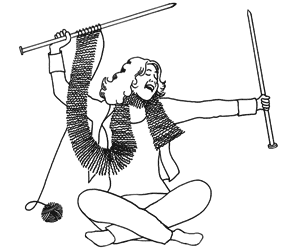Dock Ellis (1945 – 2008) was a Major League Baseball player who pitched for the Pittsburgh Pirates, among other teams. His best season was 1971, when he won 19 games for the World Series champion Pirates and was the starting pitcher for the National League in the All-Star Game. However, he is perhaps best remembered for throwing a no-hitter in 1970 and later stating that he had done it while under the influence of LSD.
read more »
Dock Ellis
Dub FX
Dub FX (real name Benjamin Stanford) is a worldwide street performer and studio recording artist from Australia. His trademark is creating live music using only his own voice, Live looping, and effects pedals.
His music is based on hip hop, reggae and drum and bass rhythms. Stanford travels and performs with his fiancée, Flower Fairy (real name Shoshana Sadia).
Mimic Octopus
The Mimic Octopus is a species of octopus that has a strong ability to mimic other creatures. It grows up to 60 cm (2 feet) in length. Its normal coloring consists of brown and white stripes or spots. Living in the tropical seas of South East Asia, it was not discovered officially until 1998, off the coast of Sulawesi. The octopus mimics the physical likeness and movements of more than fifteen different species, including sea snakes, lionfish, flatfish, brittle stars, giant crabs, sea shells, stingrays, flounders, jellyfish, sea anemones, and mantis shrimp. It accomplishes this by contorting its body and arms, and changing color.
Although all octopuses can change color and texture, and many can blend with the sea floor, appearing as rocks, the mimic octopus is the first octopus species ever observed to impersonate other animals. Based on observation, the mimic octopus may decide which animal to impersonate depending on local predators. For example, when the octopus was being attacked by damselfish, it often mimics a banded sea snake, a damselfish predator. The octopus impersonates the snake by turning black and yellow, burying six of its arms, and waving its other two arms in opposite directions. The mimic octopus is often confused with Wunderpus photogenicus, another recently discovered species. The Wunderpus can be distinguished by the pattern of strong, fixed white markings on its body.
Funky Forest
Funky Forest: The First Contact, also known as Naisu no mori is a 2005 Japanese movie written and directed by Katsuhito Ishii, Hajimine Ishimine and Shunichiro Miki. The movie is a collection of several surreal, non-sequitur shorts. Dance numbers, pillow fights, animation, comedy, and science fiction all combine to create a unique and disorienting viewing experience featuring such highlights as an absurdist tribute to David Cronenberg, an ass-television, and a girl who fires lasers from her forehead in order to battle a floating space blob which emits spinning, spherical projectiles.
Darwin Awards
The Darwin Award are a tongue-in-cheek honor, originating in Usenet newsgroup discussions circa 1985. They recognize individuals who have contributed to human evolution by self-selecting themselves out of the gene pool via death or sterilization due to their own (unnecessarily foolish) actions. The project became more formalized with the creation of a website in 1993, and followed up by a series of books starting in 2000, authored by Wendy Northcutt. The criterion for the awards states, ‘In the spirit of Charles Darwin, the Darwin Awards commemorate individuals who protect our gene pool by making the ultimate sacrifice of their own lives. Darwin Award winners eliminate themselves in an extraordinarily idiotic manner, thereby improving our species’ chances of long-term survival.’
Accidental self-sterilization also qualifies; however, the site notes: ‘Of necessity, the award is usually bestowed posthumously.’ But the candidate is disqualified if ‘innocent bystanders,’ who might have contributed positively to the gene pool, are killed in the process. The Darwin Awards books state that an attempt is made to disallow known urban legends from the awards, but some older ‘winners” have been ‘grandfathered’ to keep their awards. The Darwin Awards site does try to verify all submitted stories, but many similar sites, and the vast number of circulating ‘Darwin awards’ emails, are largely fictional.
read more »
Phiten
Phiten is a Japanese company that makes necklaces worn for the purpose of soothing one’s body. The medical and performance-enhancing claims relating to Phiten’s products are considered pseudoscience, and the technology behind the company’s products is not approved by the U.S. Food and Drug Administration. The company claims its products relieve fatigue by balancing the body’s signals that run from brain to the body and thus regulating the body’s ‘bio-electric currents’ through what the company calls the ‘Phild process,’ where titanium is turned into ‘aqua-titanium,’ a water-soluble form of titanium. The company claims to be able to integrate small amounts of the metal directly into the fabric.
Some of the professional athletes in Japan that wear Phiten necklaces include pro golfers, Olympic runners, and pro baseball players. In the USA, the company sponsors MLB players Josh Beckett, Tim Lincecum, Joba Chamberlain, Randy Johnson, Clay Buchholz, Justin Verlander, Justin Morneau, Brandon Webb, C.J. Wilson, and Dustin Pedroia.
Hyundai Equus
The Hyundai Equus is a full-size high-end luxury car that serves as the flagship model of Hyundai Motor Company. According to Edmunds the 2011 model offers far more space and equipment than other competing luxury sedans, calling it the equivalent of a loaded $104,000 Mercedes-Benz S550 for the price of a lightly equipped Mercedes E550. The Equus comes standard with a 4.6-liter V8 good for 385 horsepower and 333 pound-feet of torque. The Equus is available in Signature ($58,000) and Ultimate ($64,500) trim levels.
read more »
Garfield Minus Garfield
Garfield Minus Garfield is a webcomic created by Dan Walsh. Each strip consists of a reprint of a past episode from the comic strip Garfield, from which the character of Garfield himself has been removed through photo manipulation. Though Walsh admits that he was not the first to come up with this idea, he was the first to popularize it. The resulting strips thus consist mostly of Garfield’s owner, Jon Arbuckle, interacting with himself, rather than with his pet cat.
The strip’s website characterizes this result as ‘a journey deep into the mind of an isolated young everyman as he fights a losing battle against loneliness and depression in a quiet American suburb.’ Garfield artist Jim Davis has commented on the webcomic, stating that he is an occasional reader and finds it ‘fascinating’ and an ‘inspired thing to do.’
ROFLCon
ROFLCon is a biennial convention of Internet memes that first took place April 25–26, 2008, at the Massachusetts Institute of Technology. Various Net celebrities attended, such as the authors of the webcomics xkcd, Questionable Content and Dinosaur comics, Jay Maynard ‘The Tron Guy,’ 4Chan founder moot, Leeroy Jenkins, The Brothers Chaps, and many others. ROFLCon was organized by a group of students from Harvard University led by Tim Hwang.
The ROFLCon team spent months tracking down people associated with memes, but many of the invited guests did not attend. Attendance was open to the public after pre-registration and a fee. The primary events of ROFLCon were moderated panel discussions with the Internet celebrities, as well as question and answer sessions with the audience. Several guest speakers gave talks on issues pertaining to internet culture. The convention ended with the ROFLConcert, featuring live performances by Group X, Leslie Hall, Lemon Demon, Trocadero and Denny Blaze. In 2010, the conference took place from April 30 to May 1 at MIT.
Plunderphonics
Plunderphonics is a term coined by composer John Oswald in 1985 in his essay ‘Plunderphonics, or Audio Piracy as a Compositional Prerogative.’ It has since been applied to any music made by taking one or more existing audio recordings and altering them in some way to make a new composition. Plunderphonic music is known for heavy sampling of educational films of the 1950s, news reports, radio shows, or anything with trained vocal announcers.
The process of sampling other sources is found in various genres (notably hip-hop), but in plunderphonic works the sampled material is often the only sound used. These samples are usually uncleared, and sometimes result in legal action being taken due to copyright infringement. Some plunderphonic artists use their work to protest what they consider to be overly-restrictive copyright laws. Many plunderphonic artists claim their use of other artists’ materials falls under the fair use doctrine.
Yarn Bombing
Yarn bombing is a type of graffiti or street art that employs colorful displays of knitted or crocheted cloth rather than paint or chalk. While yarn installations – called yarn bombs or yarnstorms – may last for years, they are considered non-permanent, and, unlike graffiti, can be easily removed if necessary.
The practice is believed to have originated in the U.S. with Texas knitters trying to find a creative way to use their leftover and unfinished knitting projects, but it has since spread worldwide. While other forms of graffiti may be expressive, decorative, territorial, socio-political commentary, advertising or vandalism, yarn bombing is almost exclusively about reclaiming and personalizing sterile or cold public places.
Clean and Jerk
The clean and jerk is one of two olympic weightlifting events (the other being the snatch). It is a highly technical lift that is known as ‘the king of lifts’ because more weight can be lifted above one’s head as compared to any other known weightlifting technique. The clean portion of the lift refers to the lifter explosively pulling the weight from the floor to a racked position across deltoids and clavicles.
In early twentieth century weightlifting competitions, a variant movement called the ‘Continental’ (because it was practiced by Germans rather than the British) allowed the lifter to pull the barbell up to his belt, where it could rest. Then with several successive flips, the bar would be moved up the torso until it reached the position for the overhead jerk. The Continental gained a reputation as clumsy, slow, and nonathletic compared to the swift coordinated movement required to lift the bar ‘clean.’ Hence, the clean movement was adopted by the early weightlifting federations as the official movement.















